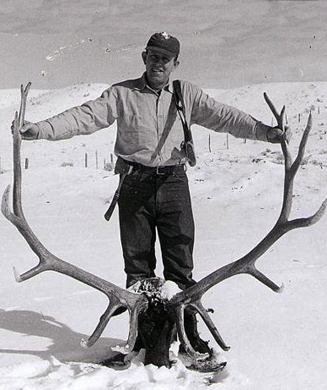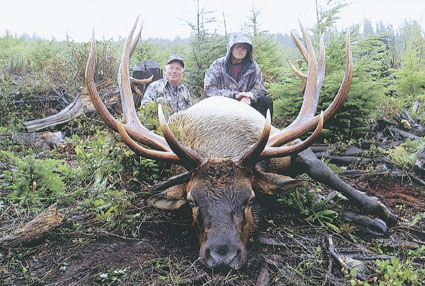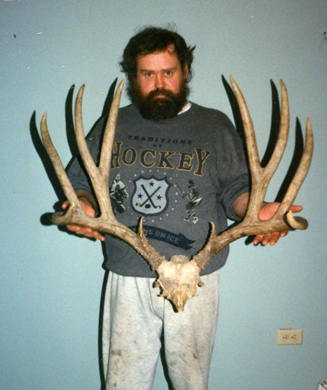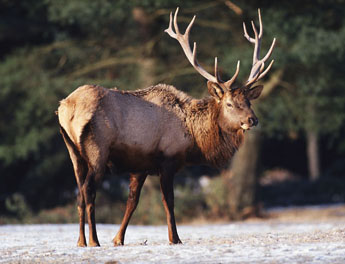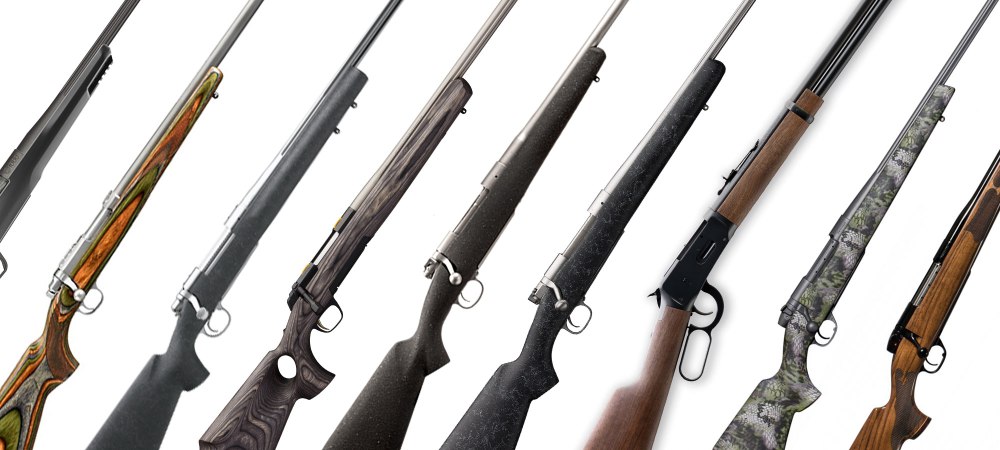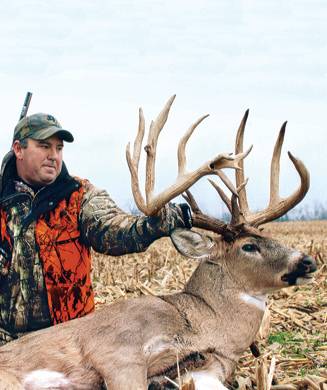Photos of “possible new world-record” animals zip along the information superhighway with reckless abandon each fall. They’re fun to look at, but once such pictures and stories gain momentum on their www.journey, the animals’ dimensions often grow and the locations where they were shot seem to roam freely about the country. These unsubstantiated tales prompted the Boone and Crockett Club to develop a “Trophy Watch” section on its Web site to “research the rumors” and “separate fact from fiction”–which leads us to the maps displayed here. Compiled using data directly from the B&C records division, they show where the hot spots truly are for trophy big game.
WHITETAIL DEER
The whitetail’s immense geographic range and the growing amount of property enrolled in quality deer management programs have resulted in a landslide of entries. Although the B&C record book contains 5,439 entries stretching back to 1830, fully 74 percent of these came after 1980, and more than half were entered since 1990.
Before 1980, the best areas for trophy whitetails were the forested northern extremes of states like Minnesota and Maine and the brush country of southern Texas. These areas had avoided the total devastation of deer herds that by the early 1900s made whitetails officially extinct in many states. Thanks to protection and reintroduction, deer populations rebounded and Middle America began to dominate the record book. For example, after 1980, Kansas and Kentucky have 235 and 242 entries recorded, respectively. These states recorded only 20 and 37 B&C whitetails between 1830 and 1980.
Illinois and Iowa currently lead the nation with 509 and 507 B&C entries respectively, followed by Wisconsin (395), Minnesota (293), Missouri (244), Kentucky (242), Kansas (235), Ohio (199), Texas (159) and Indiana (138). Illinois and Iowa have reputations for producing big bucks, and rightly so; they hold 28 of the top 50 counties. In Illinois, the Mississippi and Illinois rivers bound an area known as the “Golden Triangle” of whitetail hunting. This area includes Pike County (22), which ranks fourth nationally, along with six other counties that are in the top 10 for numbers of whitetails entered.
Southern and northeastern Iowa are also exceptional big-buck hangouts. These areas often have an ideal mix of hardwood-covered ridges and meandering rivers that create nutrient-rich bottomlands covered with corn and soybean fields. Buffalo County, Wis., which borders the Mississippi River, has this type of habitat; with an amazing 45 entries, it’s the nation’s top county. Other excellent areas include southern Texas, eastern Kansas, western Kentucky, northwestern Montana, northern Maine and southern Michigan.
MULE DEER
The B&C record book includes three categories for mule deer: the Rocky Mountain, the Columbia blacktail and the Sitka blacktail. The Rocky Mountain subspecies is the most common mule deer, although declining populations in many areas have sparked concern among hunters and wildlife managers. The map represents 1,435 entries distributed over 17 states, revealing a crescent-shaped core area from northern Arizona and New Mexico into southern Idaho and eastern Oregon.
Colorado leads the nation with 393 B&C entries, followed by Idaho (237), Utah (184), Wyoming (135), Oregon (110), New Mexico (94), Montana (74), Arizona (71), Nevada (64) and Washington (25). The remaining seven states have 48 entries.
A total of 247 counties have at least one entry, although the 37 counties with at least 11 entries account for 55 percent of the record bucks. New Mexico’s Rio Arriba County ranks first, with an amazing 81 entries, followed by Eagle, Colo. (57); Coconino, Ariz. (42); Lincoln, Wyo. (39); Mesa, Colo. (38); Garfield, Colo. (30); Elko, Nev., and Gunnison, Colo. (25); Kane, Utah (24); Delta, Colo. (23); and Bonneville, Idaho, and Montrose, Colo. (21).
If you want to tag a trophy Columbia blacktail, you’ll need to travel to the Pacific Northwest. Although often referred to as “coast deer,” this species also thrives in the dry chaparral habitat farther inland. The map includes 1,007 entries from three states: California (501), Oregon (327) and Washington (179). Trinity County, Calif., ranks first with 140 entries, followed by Mendocino, Calif. (137); Jackson, Ore. (71); Humboldt, Calif. (57); and Siskiyou, Calif. (52).
If you’re after a record Sitka blacktail, go to Alaska’s Kodiak Island. Known for its brown bear hunting, Kodiak also accounts for 90 of the 152 B&C record-book Sitka blacktail.
ELK
Boone and Crockett’s records program recognizes three categories of elk: American (which includes the Rocky Mountain elk), Roosevelt and tule. The most common is the American elk, with record-book entries from 155 counties in 18 states.
Hunters seeking a B&C American elk should look to the Southwest: Arizona has 127 of the 536 entries. Mountainous northeastern Arizona has the nation’s three top counties for elk: Apache (50), Coconino (35) and Navajo (19). Seven of the top 10 American elk taken in the United States came from Arizona.
Montana has a total of 108 B&C entries. The remaining entries are found in Wyoming (66), New Mexico (52), Utah and Idaho (41 each), Colorado (39), Oregon (24), Washington (18), Nevada (14), North Dakota (6), South Dakota and Kansas (2 each), and Nebraska, Minnesota, Iowa and California (1 each).
In 1898, the biologist C. Hart Merriam (yes, the turkey is named in his honor) first described the Roosevelt elk as a separate subspecies, naming it in honor of Theodore Roosevelt, the founder of the then 11-year-old Boone and Crockett Club. Inhabiting the coastal mountains of the Pacific Northwest, the Roosevelt is the largest-bodied elk. The record book lists entries from 24 counties distributed among three states. Oregon offers the best opportunity for a record bull, with 121 of the 209 entries, followed by Washington (62) and California (26).
In the early 1800s a vast herd of perhaps 500,000 tule elk wandered California’s Central Valley. By the late part of the century they had dwindled to less than 100. Fortunately, a cattleman named Henry Miller had the foresight and real estate to establish an elk refuge in 1874; these elk eventually became the source herd for reintroductions into other areas. The result is a current population of approximately 4,000 tule elk. Hunting permits are now available to residents through a limited draw system and to nonresidents on private lands that maintain herds. Boone and Crockett began recognizing tule elk entries in 1999, resulting in a list of 16 trophies from five California counties: Solano (11), San Luis Obispo (2), and Mendocino, Monterey and Sonoma (1 each).
PRONGHORNS
If a B&C pronghorn is what you’re after, you’ll have to find him in an immense expanse of high-plains habitat, mingled among a herd that numbers around 1 million. The record book contains 1,781 entries from 175 counties, although the 24 counties with at least 16 entries account for 71 percent of the records. Wyoming ranks first with 538 of 1,781 entries, followed by New Mexico (338), Arizona (229), Nevada (151), Montana (117), Oregon (99), Texas (79), Colorado (70), Utah (54), California (40), Idaho (21), South Dakota (17), Nebraska (16), North Dakota (8) and Kansas (4).
Wyoming has the largest pronghorn population of any state. South-central Wyoming has the two highest-ranking counties for B&C antelope, Carbon (133) and Sweetwater (116).
Another clear trophy area stretches across Arizona, New Mexico and Texas. This area has six of the top 10 counties, including Coconino County, Ariz. (93), which ranks third nationally. Northeastern New Mexico’s Mora County may provide hunters with the best geographic opportunity to shoot a record-class pronghorn. Encompassing 1,858 square miles, Mora County has 74 entries, which equates to one entry for every 25 square miles. Comparatively, Wyoming’s Carbon County has 133 entries but comprises nearly 8,000 square miles, which equates to one entry for every 60 square miles.
Six counties clustered in southeastern Oregon, northwestern Nevada and northeastern California form the smallest trophy area. It consists of 238 B&C entries, including sixth-ranked Washoe County, Nevada (77).
BLACK BEARS
Current estimates put the black bear population in the United States at around 325,000. Mapping the B&C record book reveals that the 888 black bear entries are scattered among 25 states. The Great Plains provides an orderly dividing line between the eastern and western United States, with each region having 444 entries. The top 10 are Wisconsin (142), Pennsylvania (102), Arkansas (99), California (83), Arizona (74), Minnesota (59), Colorado (48), North Carolina (42), Michigan (35) and New Mexico (25).
The West’s top county is central Arizona’s Gila (32). Northern California’s Mendocino County (22) ranks second, while Southern California’s Ventura County (15) ranks fourth. Colorado’s west-central Garfield (10) and Mesa (9) counties also rank in the top ten. Although not shown, southeastern Alaska’s Prince of Wales Island, with 41 entries, is another area to target.
The Eastern United States is interesting because the region’s 444 entries cluster in areas that are not contiguous. The northern lake country of Wisconsin, Minnesota and Michigan accounts for 236 of the 444 Eastern entries. Northern Wisconsin is exceptional: It has seven counties that rank in the top 10 nationally.
Pennsylvania has a long tradition of great bear hunting and ranks second with 102 entries, mainly from the mountainous midsection of the state. Another lesser-known trophy region is eastern North Carolina. The remaining Eastern states account for 64 entries, with most coming from eastern New York (22), western Virginia’s mountains (17) and northern Maine (12).
BIGHORN SHEEP
Boone and Crockett’s records program includes four sheep categories: the Rocky Mountain bighorn, the desert bighorn, Dall sheep and Stone’s sheep. Scoring is the same for each, although the minimum score needed for entry varies, with Rocky Mountain bighorns having the highest minimum score.
Montana has 416 of the 574 entries in the B&C book. The six highest-ranking counties are in Montana, with Granite County ranking first with 101 entries. Oregon is second with 29 entries, followed by Idaho (28), Colorado (25), Wyoming (19), New Mexico (18), Arizona and Washington (13 each), Utah (5), and South Dakota and Nevada (4 each).
SHIRAS MOOSE
When lewis and clark crossed the Rockies on their 1804-1806 expedition, they did not encounter moose because the animal didn’t exist in the region. Over the next 150 years moose migrated to seven Western states.
Boone and Crockett has three categories for moose: the Canada, the Alaska-Yukon and the Wyoming (or Shiras). Wyoming accounts for 211 of the 601 Shiras entries, followed by Idaho (127), Montana (121), Utah (91), Colorado (32) and Washington (19).
What It Takes To Make Book
These scores will get you into the Boone and Crockett Club’s Records of North American Big Game. Go to www.BooneCrockett.org for scoring guidelines.
BLACK BEAR: 21
AMERICAN ELK Typical: 375 Non-typical: 385
TULE ELK: 285
ROOSEVELT’S ELK: 290
MULE DEER Typical: 190 Non-typical: 230
COLUMBIA BLACKTAIL Typical: 135 Non-typical: 155
SITKA BLACKTAIL Typical: 108 Non-typical: 118
WHITETALL DEER Typical: 170 Non-typical: 195
WYOMING MOOSE: 155
PRONGHORN: 82
BIGHORN SHEEP: 180

